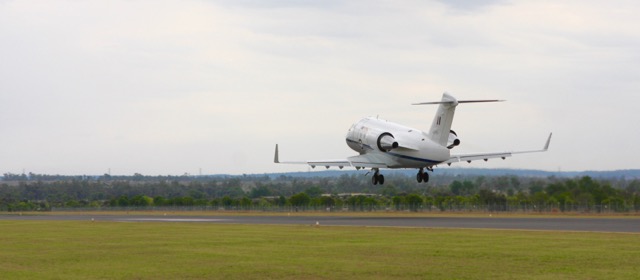
Posts about stuff relating to airports

Guyana & Runway Safety
This week's news of a runway excursion in the South American country of Guyana got me thinking of the current focus on runway safety. So, I turned my mind to writing something on the subject. Unfortunately, I turned too slowly and Andy Pasztor at the Wall Street Journal beat me to it! Thats what I get for having a day job :(.
Header image: Jonathan Borba (via Pexels)

The Simian Menace
There's more whacky animal-airport news this week. This time, its India with a rampaging group of monkeys sending aircraft on go-arounds! This story has got the works - poor planning in the placement of a garbage dump nearby, the hard work being done by airport staff to mitigate the risk as best they can and the need for a coordinated response with some success.
Header image: Jimmy Chan (via Pexels)

Next Global Initiative: Taxiway Safety?
Last month I mentioned the widespread attention being paid to runway safety (runway incursions, excursions etc.) but over the last few months, and the last few weeks in particular, we've had quite a few high-profile taxiway accidents. So much so that maybe the next global safety initiative will be taxiway safety (excursions, clearances, traffic etc.). Recent Boo-boos
Image credit: Marina Hinic

Risk-based Low Visibility Operations Standards Review
I may have mentioned my recent trip to Jakarta a couple of times already and this may be the last post about it but its the one I'm most excited about. The quick re-hash is that I went to Indonesia as part of Australia's Indonesian Transport Safety Assistance Package (ITSAP) to conduct a workshop on safety management principles for future members of their State Safety Program's Safety Action Groups - specifically airports and air navigation directorate members. The workshop focussed on acceptable levels of safety/safety objectives and risk management.
Image Credit - (cc) Bill Abbott

Aircraft Tie Down Information
Thanks to a recent addition to the SKYbrary website, this old article from the NZ CAA came to my attention. Both the Skybrary information and CAA article are good resources for a diminishing (but not gone) facility found on Australian aerodromes.

Unusual Wildlife Hazards Update
It appears that the reptilian conspiracy is real and it intends on shutting down the world's airports. First, it was geckos in the Australian outback and now its turtles in New York!
Image credit: David Dibert (via Pexels)

Spending time with our ATC cousins
i only occasionally get to spend time with the ATC community but last week offered one of those chances. My co-facilitator in Jakarta was Tim Abberton, a very experienced "airservices" ATC'er and safety guru and at least half the course were members of the Indonesian DGCA's Directorate of Air Navigation. The combined course was an excellent opportunity for the airport and air navigation worlds to work together as well as compare and contrast their approaches to similar problems.
Header image: Media Design and Media Publishing (via Pixabay)

Low Visibility Operations
Greetings from Jakarta! Tomorrow I'll be facilitating a training workshop which is tasked with a risk-based review of low visibility standards. To be honest, I'm really looking forward to it. To help with the workshop, I've been surfing youtube looking for videos of low visibility operations and I thought this one was one of the best.

Aerodrome Reporting - in a Flowchart
Aerodrome Reporting Flowchart - Landscape - v0.2 I like to sit at my computer and draw things, despite the fact that I'm no artist. A couple of weeks ago, I thought I would have a go at putting the various aerodrome reporting requirements, the procedures you might find in that section of the aerodrome manual, into a flowchart to help out anyone who is a bit confused by the various requirements.

St. Barth's Airport
On the face of it, no Australian airport should ever have obstacle problems. I mean, look at the space we have! But of course, we have the odd hill and good ol' urban encroachment means that some airports are struggling with obstacle control. Nothing like St Barth's airport though...

Indonesia, here I come...
I'm off to Jakarta next week to present a workshop on SMS to the Indonesian DGCA's SAG members from their Directorates of Airports and Air Navigation. It'll be my second trip to Jakarta and I'm really looking forward working with the Indonesians again - they are a great bunch of people, very friendly and polite. Anyway, I thought I would share the slides I'll be presenting - just for general interest's sake. I've had a go at translating most of the headings into Bahasa Indonesia using translated versions of their regulations and Google translate. I hope there are no major errors!

"a sweep of the runway collected more than 20 bird carcasses"
I spied a couple of news reports of a mass bird-strike at DFW Airport today and the above quote jumped out at me. The procedure for checking the runway following a bird-strike is not required under Australian regulations and is not always included in the aerodrome manual - despite being a really, very, really good idea.

Topic of the Month: Runway Safety
The stories surrounding runway safety (i.e. runway incursions, excursions etc.) have been coming out steadily in the lead up to and following the global runway safety symposium. The stats formed the call to action and the responses have included the technological, the educational, the multi-disciplinary and the collaborative.

Airservices NOTAM Form
Airservices NOTAM Form - ARO Version This NOTAM form has been in the wild now for nearly (or is that over) a year now, so I'm hoping most Australian aerodrome operators are aware of it, if not using it. Anyway, I'm working on another little reporting tool at the moment and having a quick link to this document on the blog would be helpful.
Header image: Cytonn Photography (via Pexels)

Unusual Wildlife Hazards
Its been a week of unusual stories relating to wildlife and aviation. The big one making its way around the internet at the moment is the one involving the big red flying rat*. But the one I personally encountered this week involved geckos. One of the aerodromes I visited this week had a problem with geckos and the printed circuit boards found within a Pilot Activated Airport Lighting Control and Aerodrome Frequency Response Unit (PAL+ARFU). Apparently, they like to damage such things and this unit had already been found unserviceable and sent off for repair.
Image credit: Jimmy Chan (via Pexels)

A Really Old Bomb Scare
As I've travelled around I've heard my fair share of stories of underground bunkers, gun placements and even possible ammunition caches. Perhaps these stories should be included in the aerodrome's risk register which had been developed as part of it safety management system. For any WWII-era aerodrome, I don't think this scenario is beyond serious consideration.

Apron Rampage
This story, to me at least, falls well into the security sphere which I tend to consider somewhat separate from safety. The difference between the two would make for an interesting discussion (maybe one to revisit later) but I usually consider security to encompass events involving an agent from outside of the aviation system intent on causing harm to it or within it. Of course there are exceptions to aspects of my definition - for example the security threat may come from the inside and the issues surrounding such events may straddle the security/safety disciplines.

What if ... the NOTAM system went down?
A great deal of risk/hazard identification is running through "what if" scenarios. Obviously, the big one is "what if an aircraft crashed?" but others include "what if the lights failed?" and "what if key staff left?" A tweet and associated webpage from the NBAA got me thinking about this scenario - "what if the NOTAM system went down?" Granted, the linked scenario is planned maintenance but it still requires consideration and maybe so does it's unplanned alternative scenario.
Header image: Kaique Rocha (via Pexels)

Classic: Jet Engine v Car
Not as "exciting" as the some other ones but still very enlightening...

Expectational Debt
Merlin Mann introduced this idea in his (relatively) new podcast, Back to Work and its a concept which, for me, hit a button. In a nut, it is the psychology burden one experiences from the expectations relating to one's outputs. These expectations can be real or perceived, from others or ourselves, they can seem minor in isolation but are cumulative in effect. The end result is that you carry around a great deal of ill-will, nearly all internal, due to the gap, again perceived or real, between those expectations and your output. I guess the key is to manage those expectations1 in such a way that minimises the debt. So, lets get those expectations out there...
Header image: Laura Balbarde (via Pexels)
